I love a good succulent plant hack---a clever solution to a common problem---especially if the hack utilizes something unexpected. I offer a dozen here.
And if you have a hack, tip, or workaround that has to do with succulents, would you kindly share it in the Comments? Thanks!
Carry cacti with firewood tongs
Eileen Haag of Lakeside, CA notes that a friend who donated "some sections of fence post cactus" to a charity plant sale she was in charge of, transported them with "fireplace log tongs. They make handling the large pieces so much easier and safer than my bailing twine method," Eileen says.
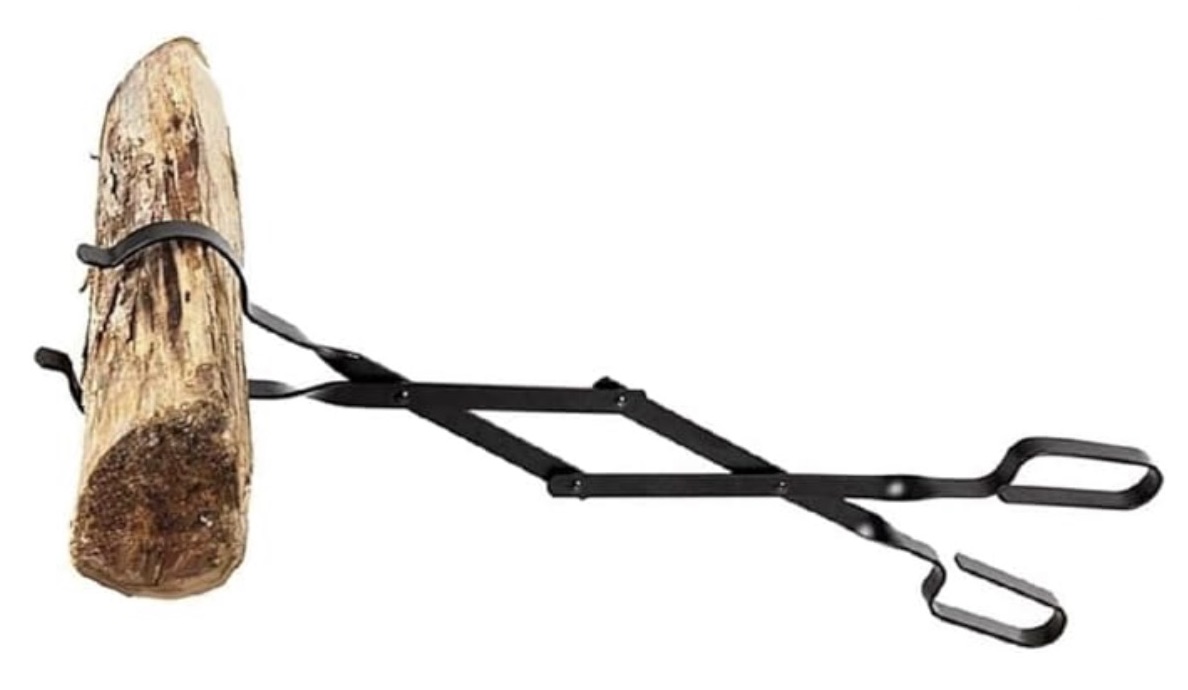
Tongs shown here hold firewood, but also might transport a segment of cylindrical cactus (Amazon photo)
My fool-the-eye aeonium
Like me, you've probably had aeoniums that lean toward the sun, their rosettes nearly vertical atop horizontal stems.
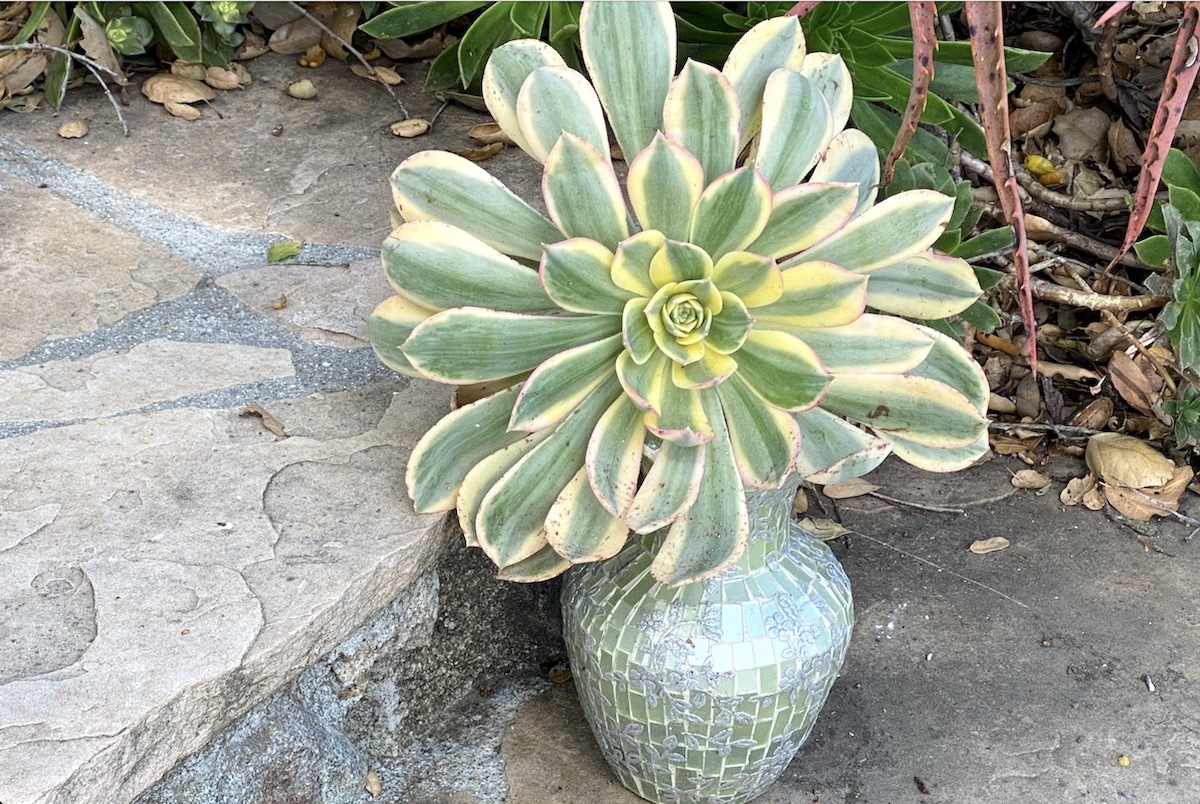
My Aeonium 'Sunburst' rosette pretends to be a cut flower
This hack fooled visitors for nearly two years: I placed a vase under the neck of a 'Sunburst' rosette. It looked like it had been cut and put in the vase, but from the side (see photo at top), it became obvious it was rooted in the ground more than a foot away. Ha-ha!
Watering hacks
How do you water a succulent that has engulfed its pot? If it's a spherical cactus, dribble water on the top. Ribs will channel water to the soil. Leaves of agaves and other rosette succulents also efficiently funnel water downward.
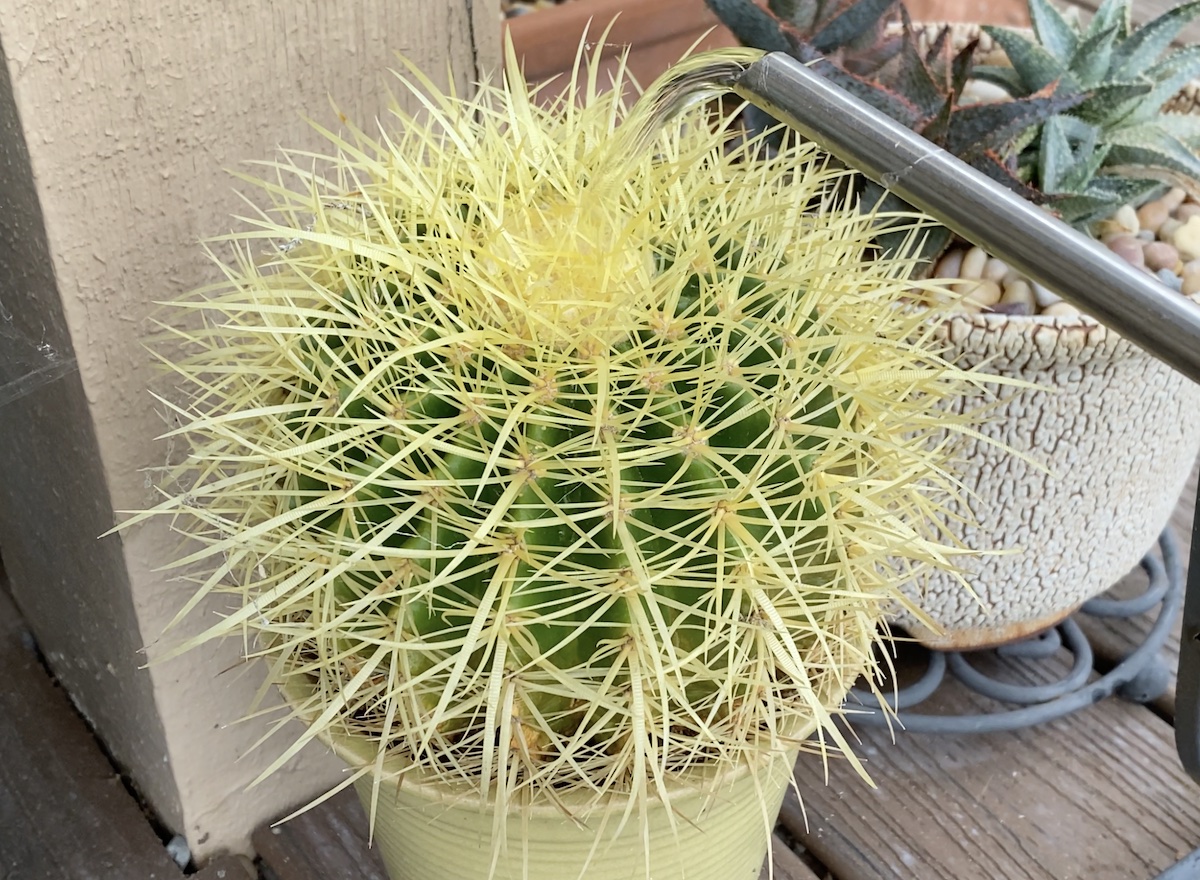
This barrel's ribs and spines saw to it water reached its roots. A little flowed out of the pot's drain hole, but none dripped off the plant.
Alternatively, set the pot in a pan with an inch or two of water. Via osmosis, it will go up through the drain hole and moisten the soil.
Topdressing tips
Another reason to water pots from below is to avoid disturbing fine topdressings like colored sand or criva (tiny pebbles).
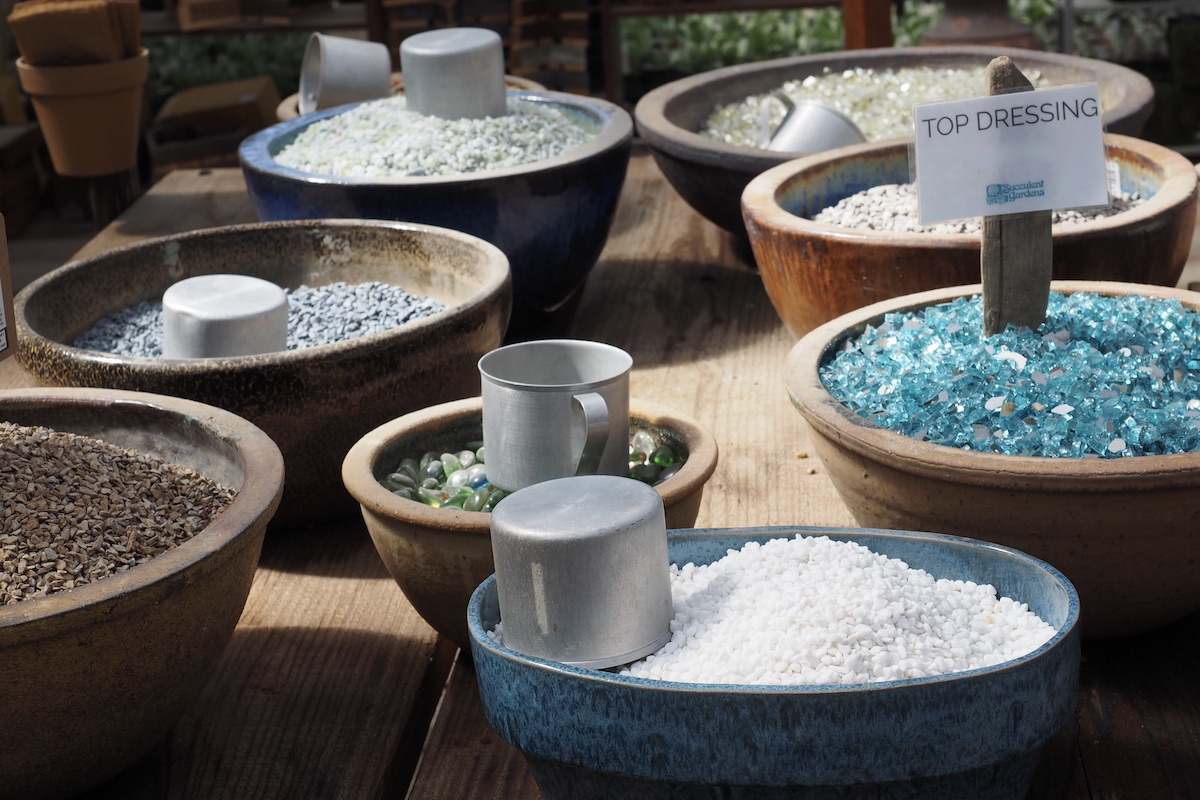
Assorted topdressings for pots at Succulent Gardens nursery in Castroville, CA
Before adding a glass topdressing, first spread a layer of white sand or pumice. It'll keep the color of the glass true, and you won't have to use as much of the glass to get the desired effect.
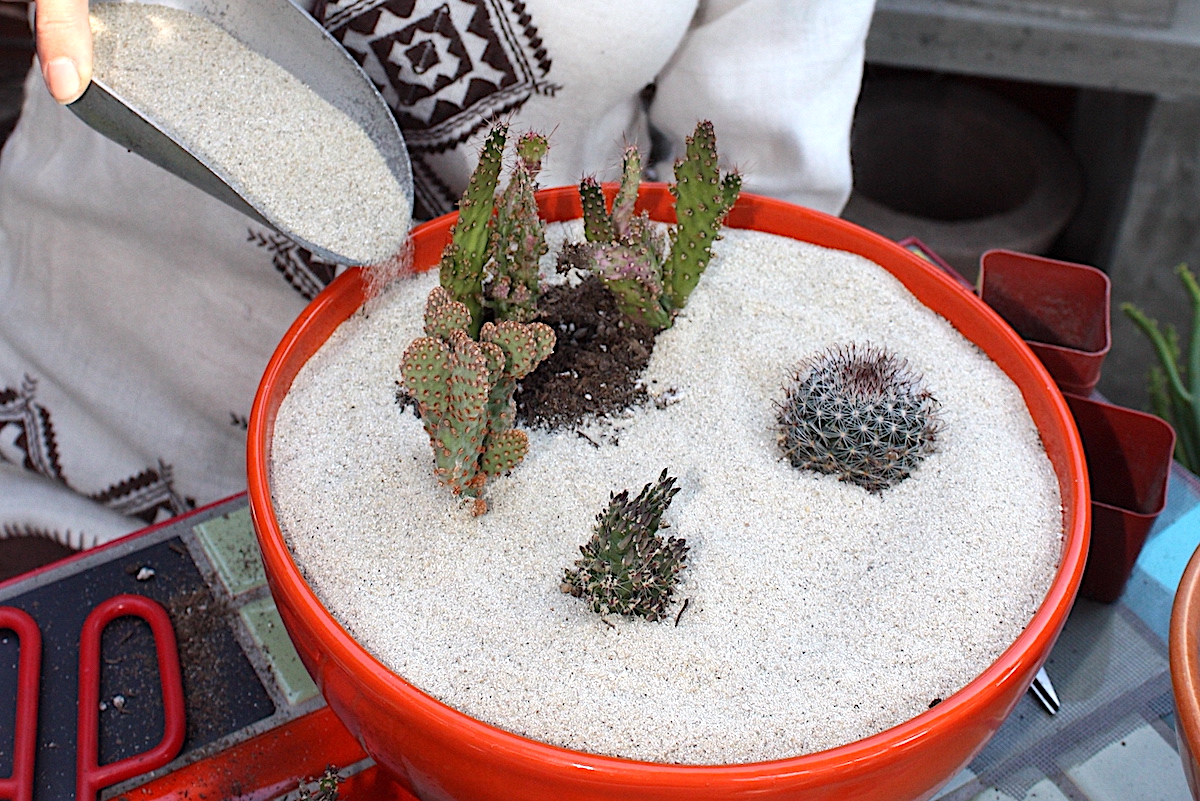
White sand can serve as a topdressing or an under-layer for crushed glass.
Avoid breaking a nice urn
When planting a pot that has shoulders, keep in mind that roots will expand into the wide area below the neck. This hack shows how to avoid having to damage the plant and/or pot later on.
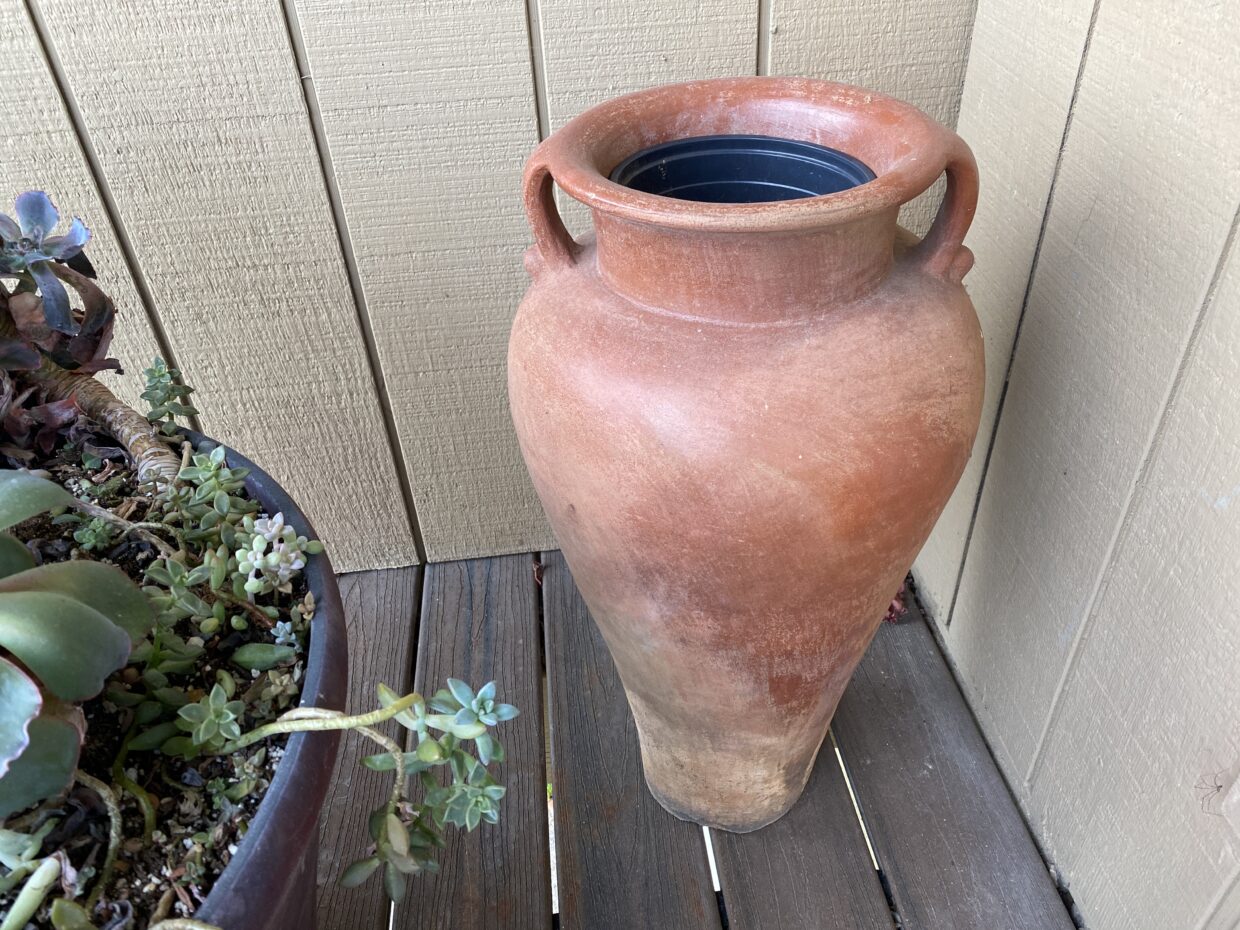
Terracotta pot with nursery pot as liner
I used a liner (cache-pot), a smaller second pot that fits into the larger. You don't want the liner to slip down into the pot, yet it also should be easy to remove. So the inner rim should be below the outer to conceal the liner, and the neck of the larger pot needs to hold the smaller snugly. How'd I plant it? See below.
Plant-label hack
Naturally we all want to remember the names of our garden plants (guests will ask), but plastic plant tags crack and fade, and metal ones are pricey and hard to read.
Every year during the Laguna Beach garden tour, I look for rounded stones that that marvelous garden club uses to ID noteworthy plants.
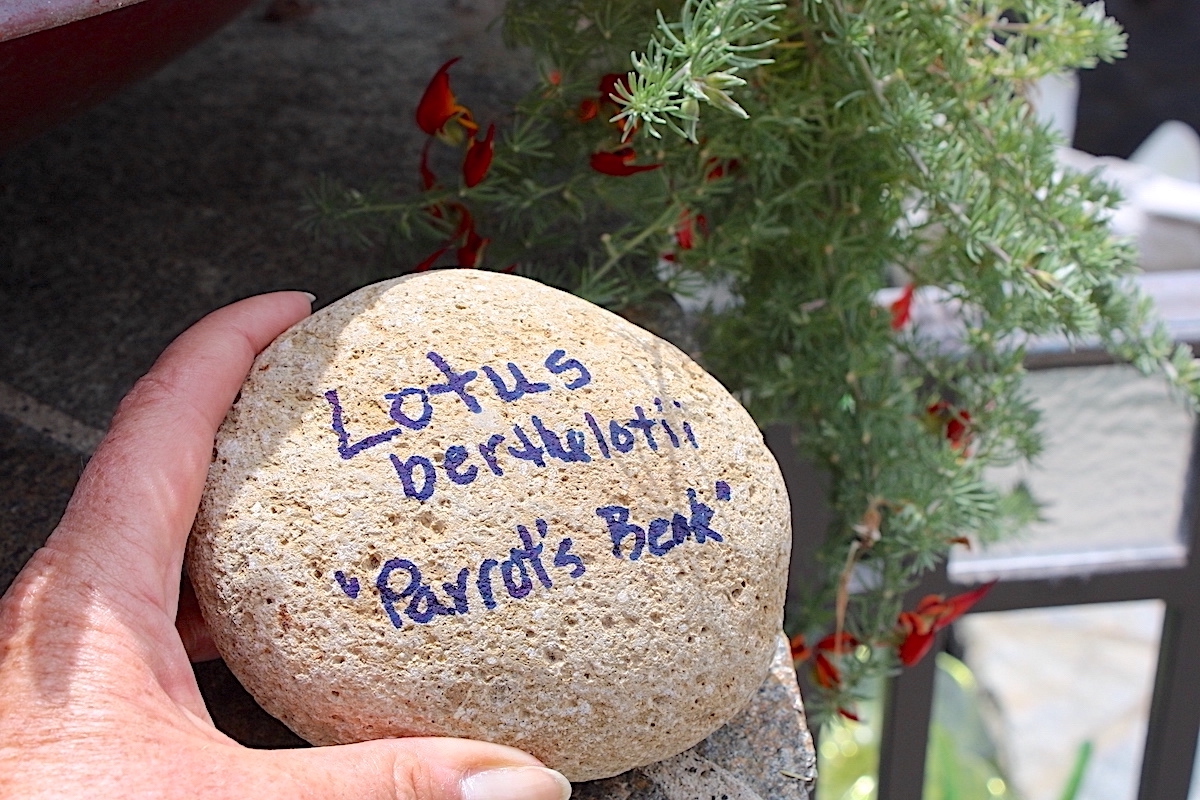
Rock used as a plant label
What pen to use? Sharpie permanent markers or specialized garden markers won't fade and will work on any smooth surface.
This is what I planted in the "pot with shoulders" above. Senecio macroglossus (wax ivy) is a name I can never remember, hence the labeled stone on the rim. The plant cascades like ivy over time.
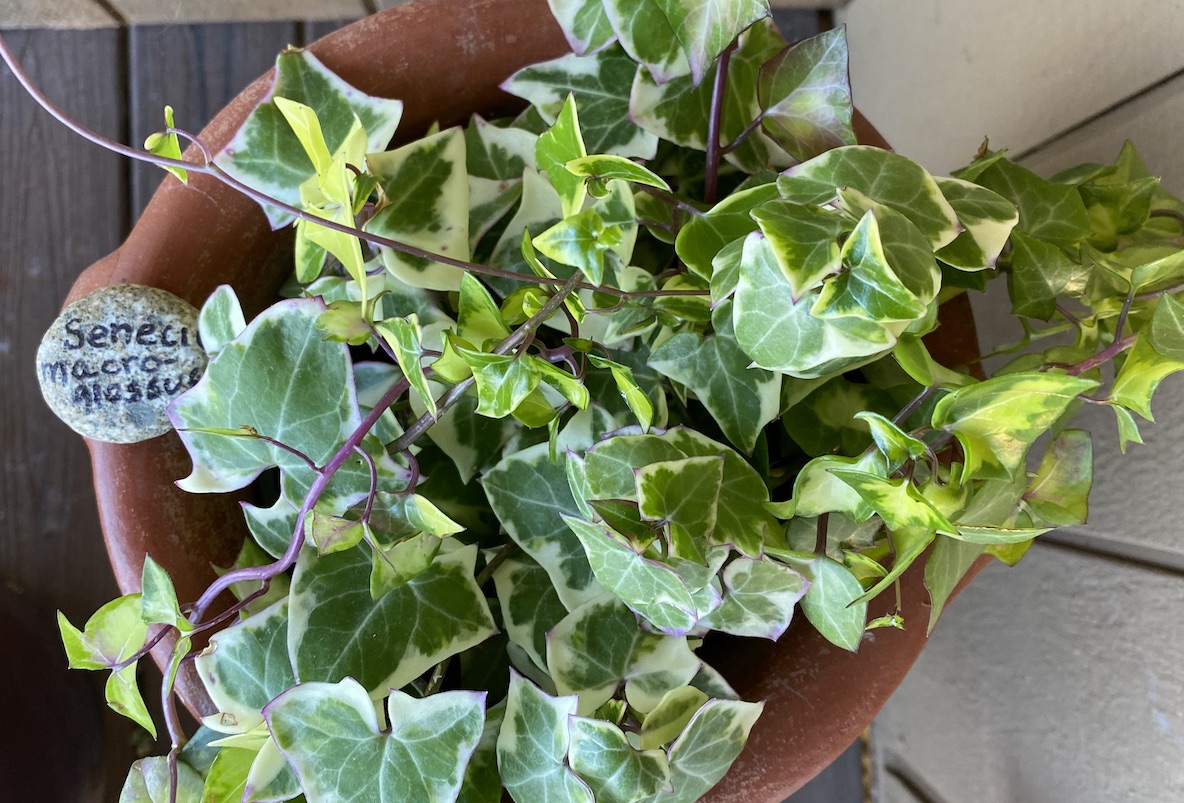
Senecio macroglossus (wax ivy) in tall pot
Alternatively, coat one side of flat oval rocks with acrylic paint. Let dry and add the plant's name in a contrasting color.
Disguise white objects
Nothing stands out in a garden as much as white. (Red is next; black is last.) Notice how, in photos of your garden, white commands attention.
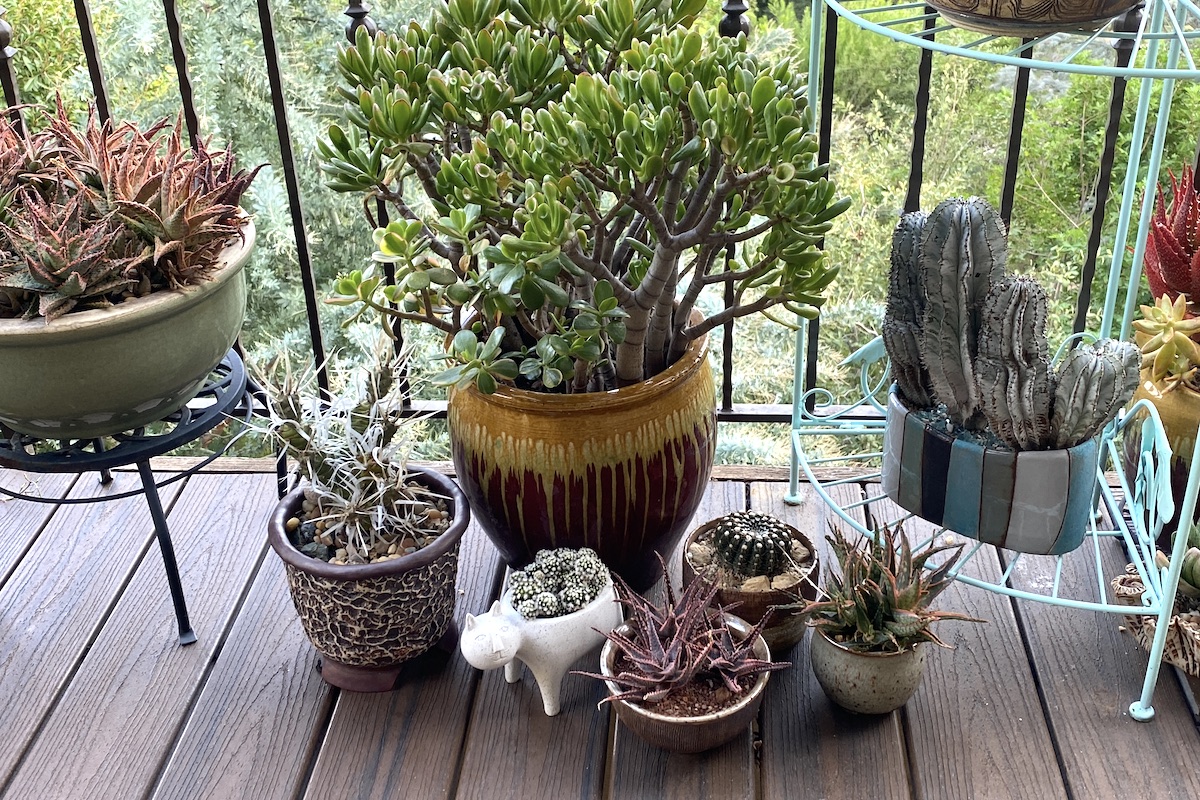
Which pot in this grouping stands out the most? Purr.
Use white wisely: either feature it or make it disappear. If you can't remove a small but offending object like an irrigation riser, spray it with camouflage paint.
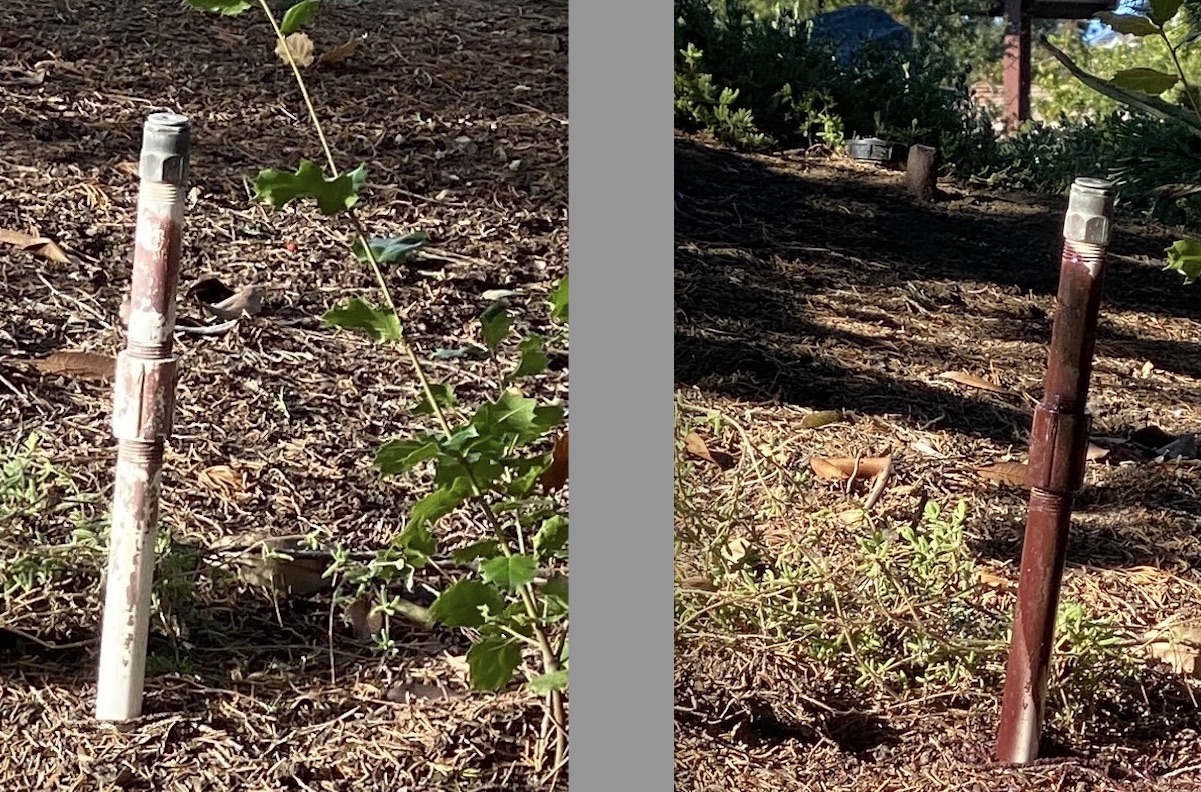
Before (left) and after (right): white riser painted brown
Don't like corking? Paint it!
Tall cacti and euphorbias are prone to corking---brown patches that suggest rot but actually are woody tissue.
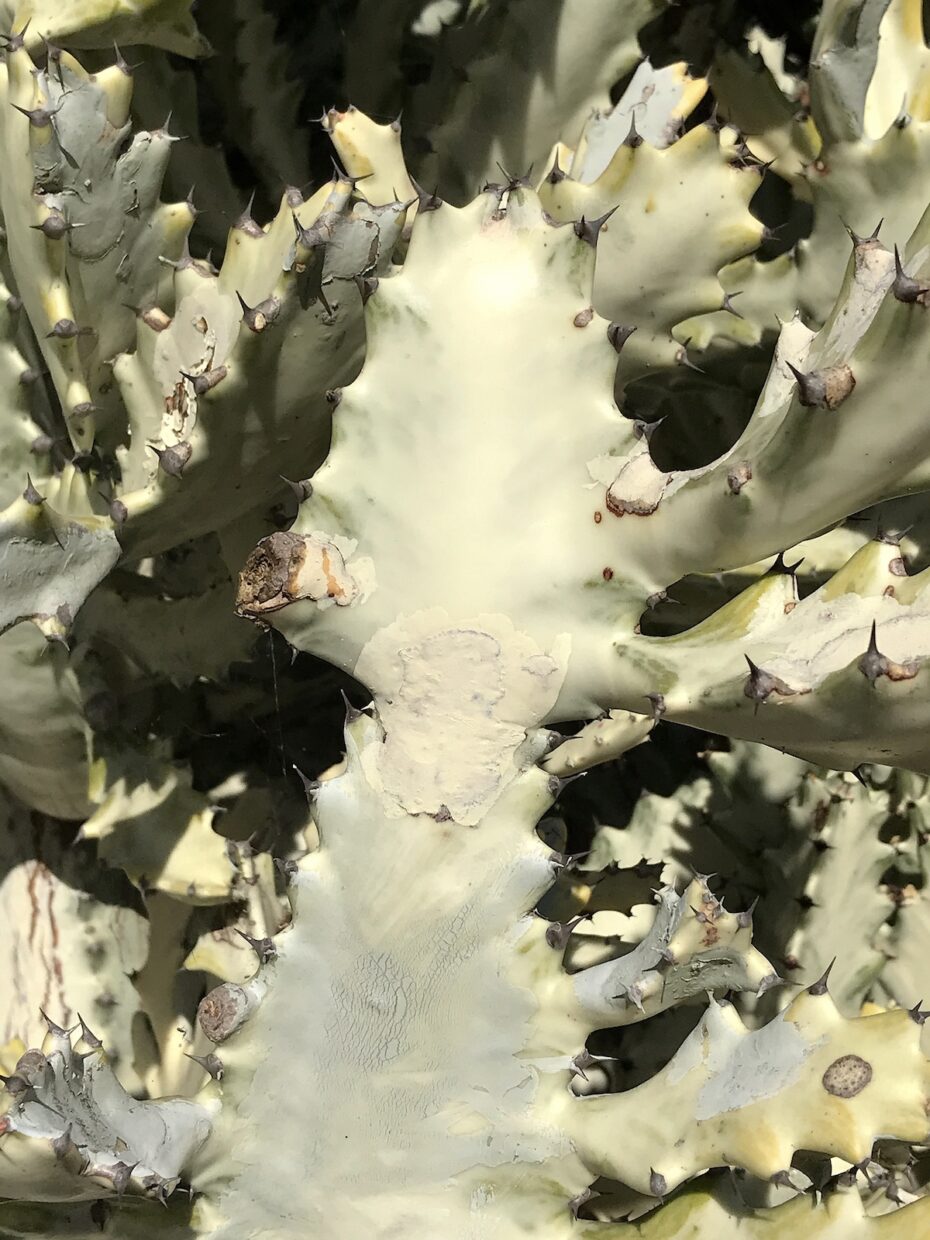
Jim Bishop, whose famed San Diego garden often is on the annual Mission Hills Garden tour, painted areas of corking on an Euphorbia ammak 'Variegata' near his front door
If you find corking unsightly, paint over it to match the plant's skin. Waterproof acrylic won't harm the succulent. And, for that matter, neither does corking.
Tumble-safe pots
Decide where you want pots to go on a shelf or wooden step, then mark where their drain holes will be. Pound large galvanized nails, one per pot, into each spot. Nails need to be secure and have several inches sticking up. Anchor a pot on the elevated part of each nail through its drain hole.
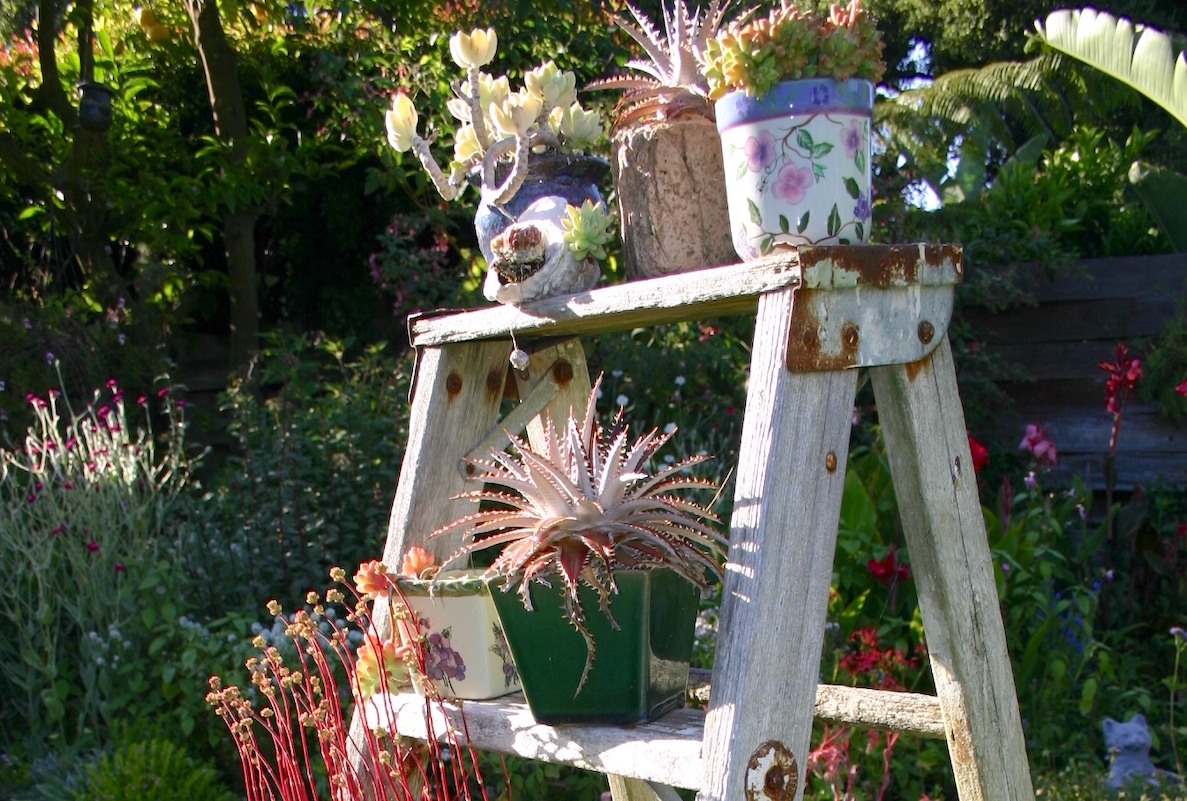
Flower pots at risk of falling? Use finishing nails to hold them in place through their drain holes.
A fix for floppy shrubs
This works for shrub aeoniums, cotyledons, ice plants and senecios. It's an alternative to the conventional way to tidy floppy, untidy succulents (which is to pull the plants out and use their top growth for cuttings).
Think of it as planting cuttings while they're still on the succulent: dump a bag of potting soil onto the plant to cover its naked, branching stems. Nodes on stems will send roots into the soil and ensuing new growth will fill gaps.
For a quick aesthetic fix, also tuck cuttings into the mound of soil. Water to settle it and to rinse off accidentally buried rosettes.
Speed up slow plants
When you want a super-slow potted succulent like Agave victoria-reginae to grow faster, here's a tip from members of the CSSA (Cactus & Succulent Society of America): Plant it in the garden.

Agave victoria-reginae (and most succulents for that matter) grow faster in the ground
Roots with room to spread fuel top growth. When the succulent attains show-quality size, transplant it into a worthy pot.
Use lizard ladders
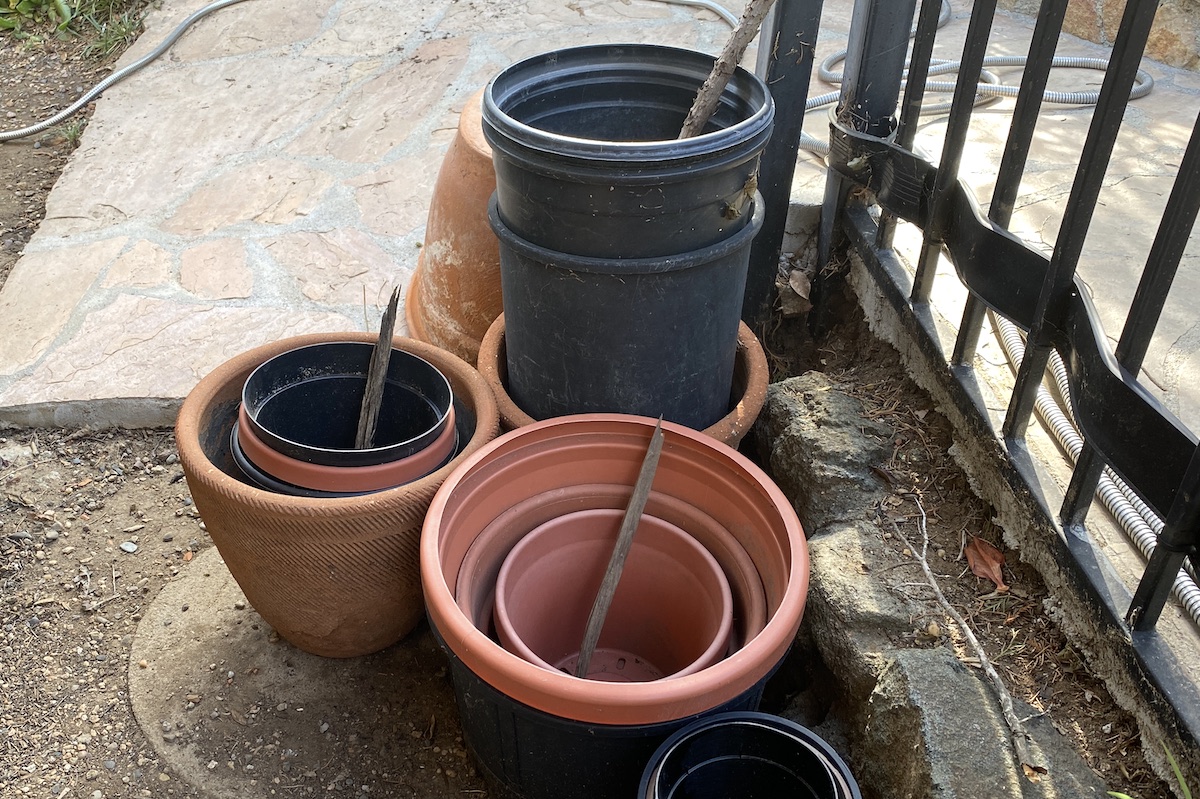
I keep critters from getting trapped inside empty nursery pots with "lizard ladders."
If you, like me, have empty nursery pots, you risk trapping lizards. They get in but can't get out because of the slick plastic. I place a small branch or wood stick in each pot so the critters can climb out...and so I don't find desiccated remains.
My echeveria-hummer hack
Blooming robs echeverias of energy and can make rosettes lopsided. Nurseries routinely remove echeveria flower stalks to preserve the plants' vitality and symmetry.

Hummers visit echeveria flowers in vase as readily as those on the plant.
Because hummingbirds love them, I place echeveria bloom stalks in a large vase or bucket near the plants. Buds continue to open into lantern-like flowers, and---because stems are succulent---they'll last as long as those on the plants.
YOUR turn!
Got a favorite succulent-specific hack? I'll bet I'm not alone in wanting to hear about it. Do share it in the Comments below. Thanks!
Related info on this site
Potted Succulent Tips and Hacks
Garden Gate shows ten of my tips and hacks for potted succulents. However, the magazine didn’t have room for all the ideas I sent. So, for your enjoyment and edification, here are the rest.
15 Thrifty Tips for Low-Water Landscapes
My 15 simple, economical fixes for a 2-1/2 acre Santa Barbara wedding venue emphasize succulents and apply to any low-water, mild-climate landscape.
The post Succulent Plant Hacks appeared first on Debra Lee Baldwin. Copyright © Debra Lee Baldwin.
from Debra Lee Baldwin https://ift.tt/ScthnB5
via IFTTT



No hay comentarios:
Publicar un comentario